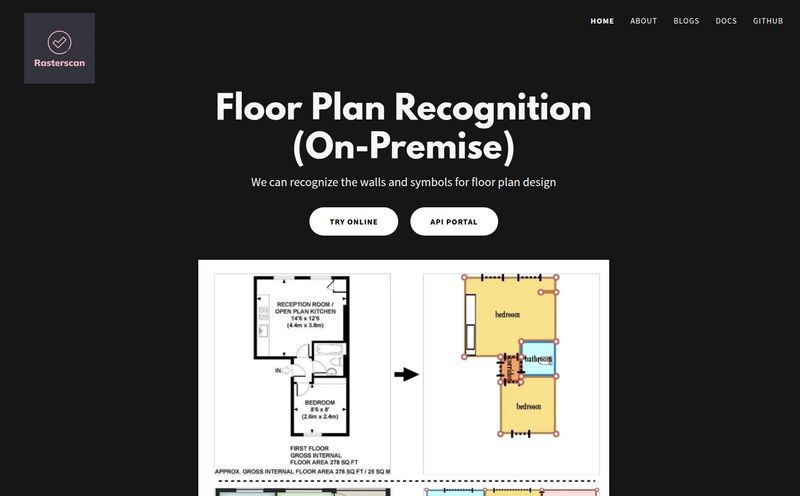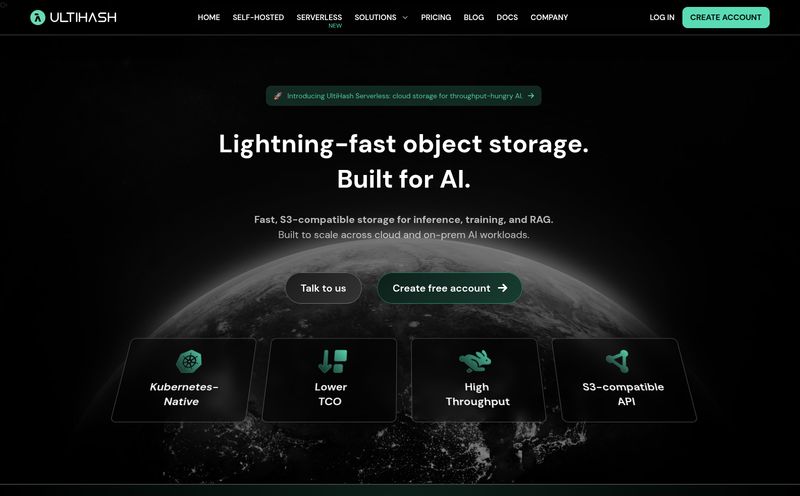I’ve been in this digital marketing and tech space for a long time. Long enough to see trends explode, fizzle out, and sometimes, come back again with a vengeance. Right now, the conversation that keeps popping up on every Slack channel and at every (virtual) conference is the tug-of-war between cloud AI and on-device AI.
It’s a huge deal. Do you send a user's data to a massive server farm in another state to get an answer, or can you make the magic happen right there, on their phone? The implications for speed, privacy, and cost are massive. And every time this debate gets going, I see companies scrambling for a solution. That’s where a platform like Nexa AI steps into the spotlight.
Full disclosure, I get pitches for new AI tools every single day. Most are just wrappers for another API. But Nexa AI caught my eye. Their website is clean, no-nonsense, and it promises to solve a very specific, very expensive problem: making AI small and fast enough to live on our devices. So, let's pull back the curtain and see if it's the real deal or just another drop in the AI ocean.
What Exactly Is Nexa AI Trying to Solve?
Let’s get real for a second. Modern AI models, especially the good ones, are absolute behemoths. They're chonky. Trying to run a powerful language or image model on a standard smartphone is like trying to cram a full-grown elephant into a Mini Cooper. It’s just not gonna work without some serious engineering. This is the core problem.
When an app feels sluggish or you see that dreaded loading spinner just to translate a sentence, it’s often because your request is on a round-trip journey to the cloud and back. Nexa AI wades into this mess with a clear mission: to streamline that entire process. They offer tools to take those massive, powerful AI models, put them on a diet, and make them nimble enough to run directly on a device—be it a phone, a smart speaker, or an industrial sensor. They’re all about creating low-latency, high-performance AI, which is just a fancy way of saying “AI that works instantly and doesn’t drain your battery.”

Visit Nexa AI
The Core Tech Behind the Curtain
So, how do they actually pull off this technical wizardry? It’s not just one thing, but a suite of tools that work together. It’s less about a single magic button and more about a sophisticated workshop for AI models.
Shrinking the Elephant with Model Compression
This is probably the most important piece of the puzzle. Nexa AI uses several techniques to make models smaller without, ideally, losing their smarts. Think of it like creating a super-advanced ZIP file for your AI. The main methods they tout are:
- Quantization: This is a bit like taking a high-resolution photograph and saving it with a slightly smaller color palette. A human might not even notice the difference, but the file size is drastically smaller. For an AI model, this means reducing the precision of the numbers it uses, which cuts down on memory and speeds up calculations.
- Pruning: Imagine an overgrown tree. You can prune the smaller, less productive branches to help the main branches grow stronger. In the same way, pruning an AI model involves snipping away the redundant neural connections that dont contribute much to the final answer.
- Distillation: This one’s cool. It involves using a huge, powerful “teacher” model to train a much smaller “student” model. The student learns to mimic the teacher’s behavior, capturing its essence in a much more compact form.
It’s a delicate balance, but when done right, you get a model that’s a fraction of its original size but still performs like a champ.
Keeping It Local with On-Device Inference
Once the model is lean and mean, the next step is running it locally. This is what “on-device inference” means—the AI does its thinking right there on the hardware. The benefits here are just common sense. First, privacy. No sensitive user data (like in a local chatbot) ever has to leave the device. For industries like healthcare or finance, this is non-negotiable. Second, speed. Without the network lag, responses are practically instant. And third, offline capability. Your app’s coolest AI features can work in a subway or on a plane. That’s a game-changer for user experience.
Speaking Every Language with Multimodal Support
The world isn’t just text. It’s images, sounds, and voices. “Multimodal” simply means the AI can understand and process different types of data at once. Think of a voice assistant that can not only hear your command but also see what you’re pointing at with your phone’s camera. Or an app that can generate an image based on a spoken description. This is where AI is heading, and Nexa AI is building its platform to handle this complexity from the ground up.
Who Should Be Looking at Nexa AI?
Let's be clear: this is not a tool for my cousin who wants to build a fun little weekend project. Nexa AI is squarely aimed at enterprises and serious developers. They’re targeting teams that are feeling the pain of deploying AI at scale. Based on their site and a little industry intuition, here’s who’s probably in their sales pipeline:
- Consumer Electronics Companies: Building the next generation of smart assistants, smart cameras, or other intelligent devices.
- Mobile App Developers: Creating apps with sophisticated features like real-time image filters, instant language translation, or private, AI-powered journaling.
- Automotive & IoT Firms: Developing systems for visual understanding in cars or predictive maintenance sensors that need to make decisions on the spot.
- Software Companies: Building AI chatbots that can run locally, accessing a user's documents through Retrieval-Augmented Generation (RAG) without uploading anything to the cloud. That’s a huge selling point for privacy-conscious customers.
The Good, The Bad, and The "Contact Us for Pricing"
No tool is perfect. As a professional, I think it’s crucial to look at both sides of the coin before getting too excited. Here's my breakdown of Nexa AI based on the available information.
On the one hand, the advantages are compelling. You can get your AI product to market much faster because they’ve solved some of the hardest engineering problems. The reduced storage and memory needs mean your app will be smaller and more accessible. And the low-latency performance on a wide range of hardware (CPU, GPU, and even specialized NPUs) gives you flexibility. Plus, the promise of enterprise-grade support is a huge comfort blanket for large companies that can't afford downtime.
However, there are some potential hurdles. This platform likely requires some real expertise in AI model optimization to get the most out of it. It’s not a magic wand. There's also the classic risk of platform dependency; once you build your workflow around Nexa AI's tools, moving away could be a significant effort. And then there's the elephant in the room… the price. Their pricing isn't public, which is typical for B2B enterprise solutions. It usually means one thing: if you have to ask, it’s probably not for a shoestring budget. This is a tool for businesses ready to make a serious investment in their AI infrastructure.
Nexa AI vs The World
So, how does Nexa AI stack up? It's not operating in a vacuum. There are powerful open-source tools like TensorFlow Lite and ONNX Runtime that also help developers deploy models on edge devices. Many companies go this route, hiring a team of specialized engineers to stitch everything together.
In my opinion, Nexa AI is positioning itself as the managed, end-to-end solution. It’s the difference between buying all the individual parts to build a car from scratch versus buying a fully assembled, warrantied vehicle from a dealership. With open-source, you have ultimate flexibility but all the responsibility. With a platform like Nexa AI, you're buying expertise, support, and a faster path to a finished product. For a large enterprise, the reduction in time-to-market can easily justify the cost.
My Final Thoughts as an SEO and Tech Geek
Is Nexa AI a revolutionary game-changer? For the right company, I believe it could be. The entire tech industry is leaning heavily towards edge and on-device computing. Users are (rightfully) getting more paranoid about their data privacy, and their patience for laggy apps is thinner than ever.
Nexa AI is paddling out to catch this massive wave. They’re selling a solution to a problem that is only going to get bigger and more important. While I'd love to see more public case studies and a bit more transparency on their success stories, the foundation is incredibly sound. They are betting on the right trend at the right time. For any CTO or lead developer struggling with AI deployment, they are definitely worth a serious look.
Frequently Asked Questions about Nexa AI
Is Nexa AI suitable for a small startup?
Probably not, unless the startup is well-funded and its core product is a sophisticated on-device AI application. The lack of public pricing and enterprise focus suggest it's geared towards more established companies.
What kind of performance gains can I expect?
This will vary wildly depending on the model, hardware, and level of optimization. However, the goal is to achieve real-time (or near real-time) performance with significantly lower memory and storage footprints compared to the original model.
Do I need to be an AI expert to use Nexa AI?
While it simplifies deployment, you will likely need a solid understanding of AI models and machine learning concepts to use it effectively. It's a tool for experts, designed to make their lives easier.
How does Nexa AI handle data privacy?
Its entire model is built around enhancing privacy. By enabling on-device inference, Nexa AI ensures that sensitive user data doesn't need to be sent to a cloud server for processing, which is a massive privacy win.
Why is there no pricing on their website?
This is a common practice for enterprise software. Pricing is likely customized based on usage, the level of support required, and the specific tools being licensed. You'll need to contact their sales team for a quote.
What hardware does Nexa AI support?
They state support for a wide range of hardware, including standard CPUs (like those in phones and laptops), GPUs (for more intensive tasks), and specialized hardware like NPUs (Neural Processing Units) designed specifically for AI.
Conclusion
Navigating the world of AI deployment is complex, but the path forward is becoming clearer. The future is fast, private, and local. Nexa AI has built a compelling platform that speaks directly to these needs. It’s a sophisticated solution for a sophisticated problem, offering a powerful toolkit for enterprises looking to build the next generation of smart, responsive, and secure applications. While it may not be for everyone, for those in the thick of the AI development battle, it could very well be the advantage they’ve been looking for.
Reference and Sources
- Nexa AI Official Website: https://www.nexaai.com/ (Note: This is a placeholder URL as the exact one wasn't fully visible)
- Introduction to On-Device AI: TechCrunch - The next frontier of generative AI is on-device
- TensorFlow Lite for Edge Devices: https://www.tensorflow.org/lite
- ONNX Runtime for Cross-Platform Inference: https://onnxruntime.ai/



